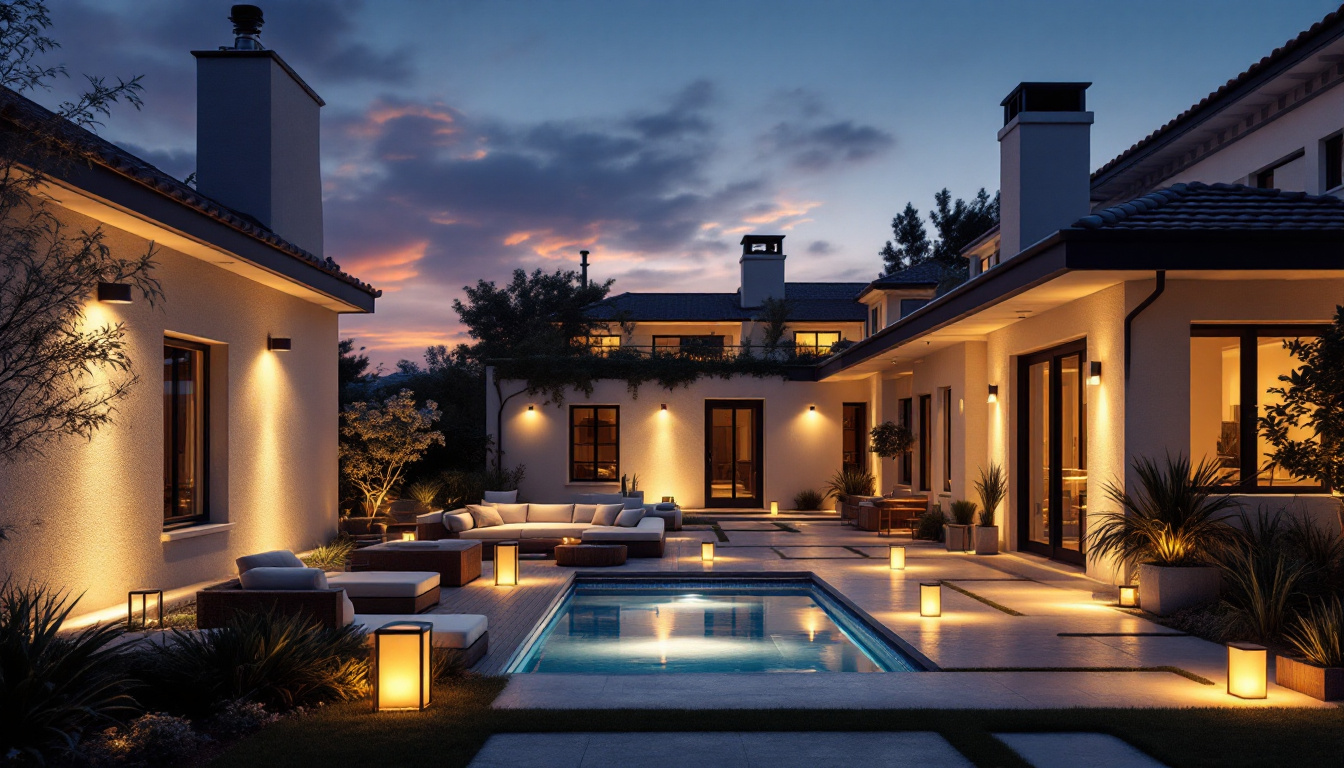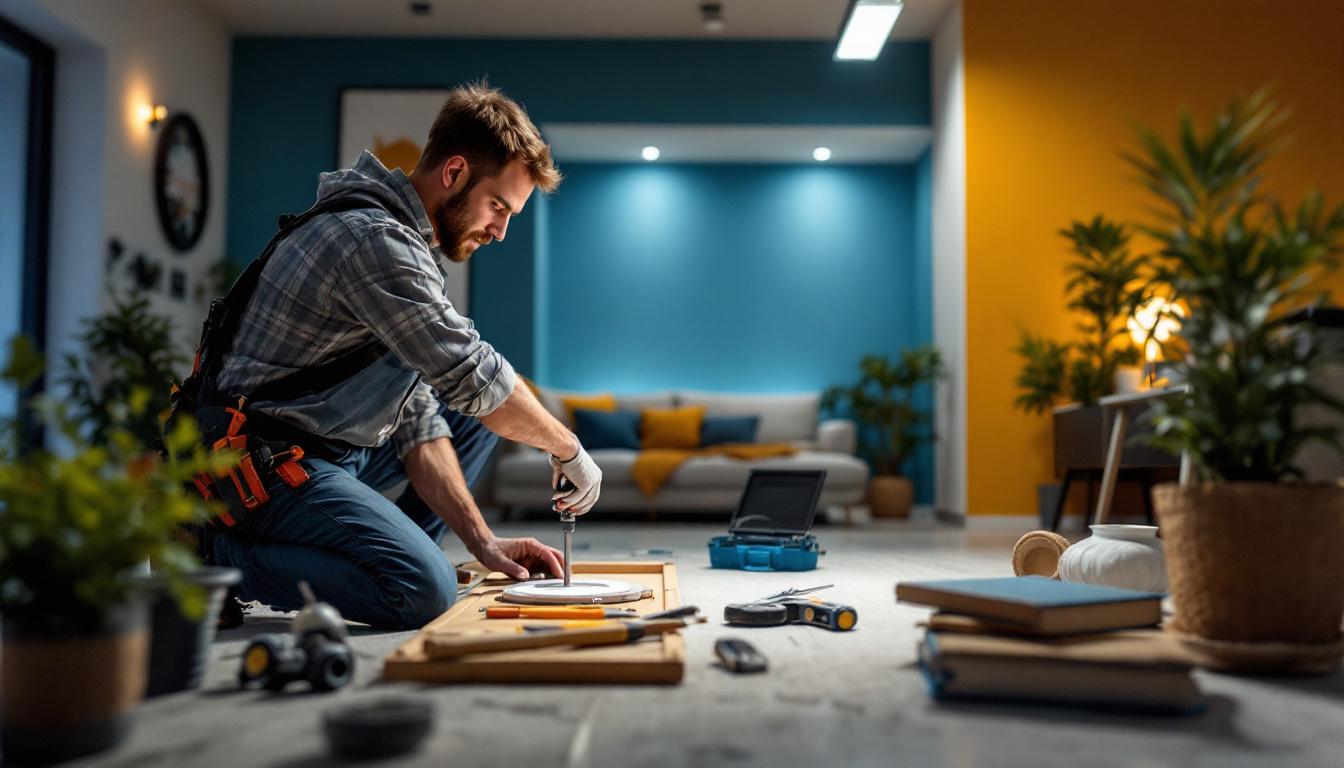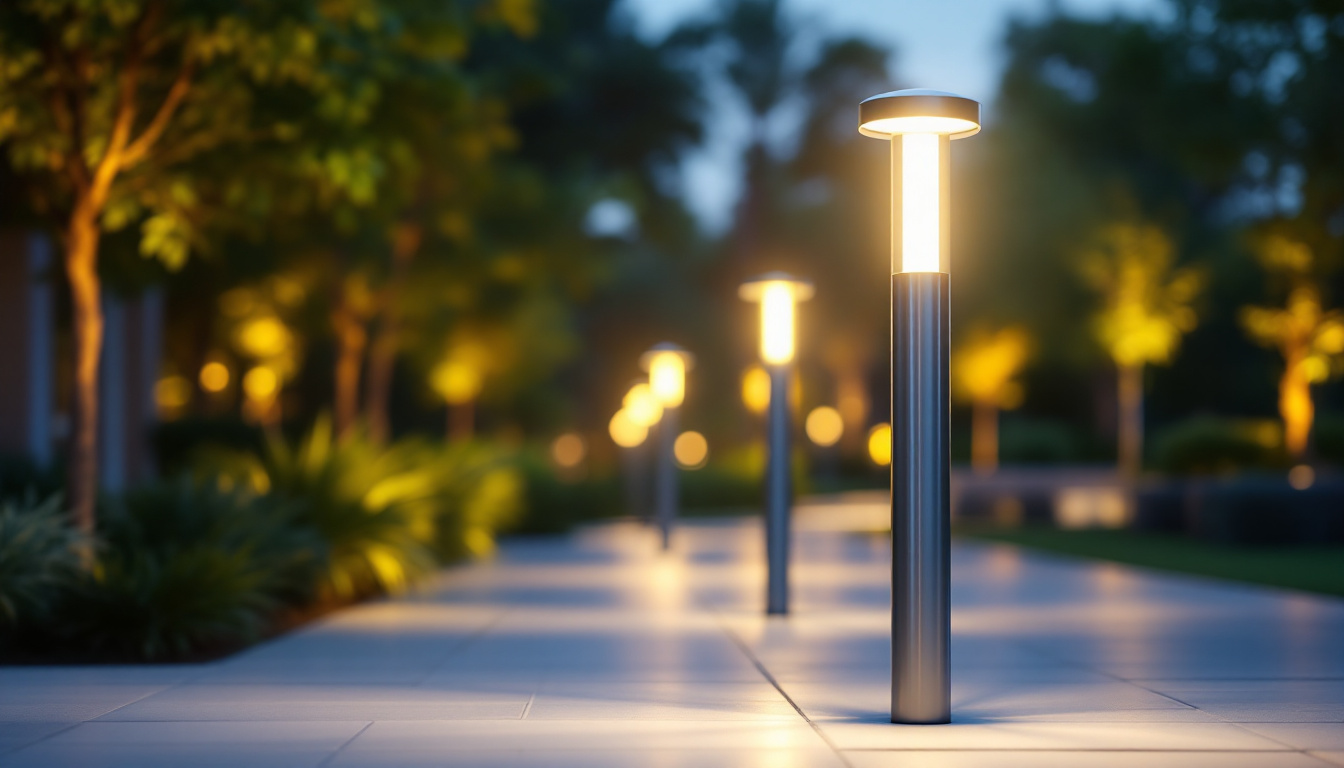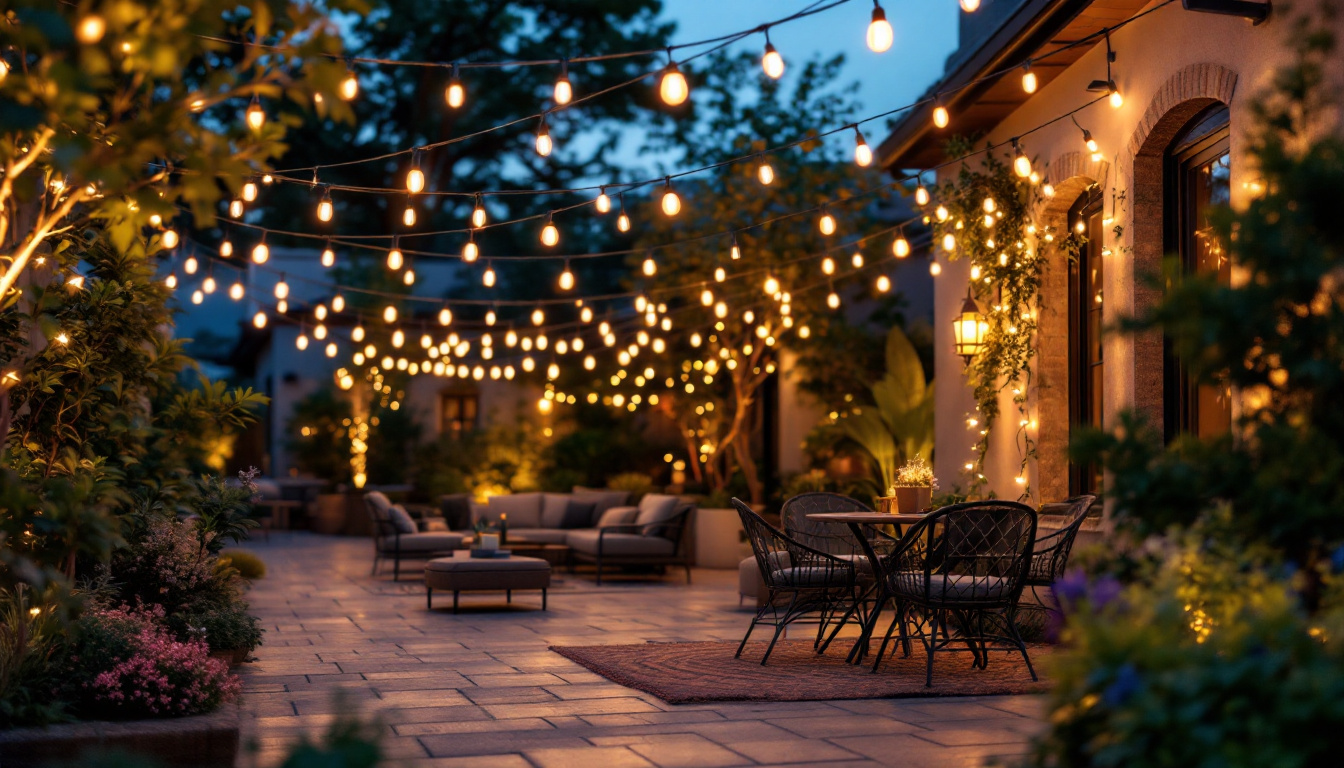
outdoor lighting is an essential aspect of residential design, offering both aesthetic appeal and functional benefits. For lighting contractors, understanding the nuances of outdoor lighting can lead to successful projects that enhance the beauty and safety of homes. This article provides key tips to help contractors navigate the complexities of outdoor lighting installations.
Before diving into the technical aspects of outdoor lighting, it is crucial for contractors to understand the primary purposes of such installations. Outdoor lighting serves various functions, including safety, security, and ambiance, each requiring a tailored approach. By recognizing these purposes, contractors can better meet the needs of their clients and enhance the overall functionality of outdoor spaces.
One of the foremost reasons for installing outdoor lighting is to enhance safety. Well-lit pathways, driveways, and entrances help prevent accidents and deter potential intruders. When planning lighting for these areas, it is essential to consider the placement and brightness of fixtures to ensure visibility without causing glare. Properly illuminated steps and walkways significantly reduce the risk of trips and falls, particularly in homes with children or elderly residents.
In addition, motion-sensor lights can be an effective security measure, illuminating areas only when movement is detected. This not only saves energy but also provides a sense of security for homeowners. Furthermore, integrating smart technology can allow homeowners to control their outdoor lighting remotely, creating the illusion of occupancy even when they are away. This added layer of security can be particularly beneficial for those living in neighborhoods with higher crime rates.
Outdoor lighting can transform a mundane exterior into a stunning visual display. By highlighting architectural features, landscaping, and outdoor living spaces, contractors can create inviting atmospheres that enhance the overall appeal of a home. The right lighting can accentuate the beauty of a garden at night, showcasing blooming flowers and unique plant arrangements that might otherwise go unnoticed after sunset.
Using a combination of uplighting, downlighting, and accent lighting can help achieve a balanced look. It is important to consider the style of the home and the preferences of the homeowner when selecting fixtures and layouts. For instance, a contemporary home may benefit from sleek, minimalist fixtures, while a traditional home might be complemented by ornate lanterns. Additionally, the use of colored lighting can add a festive touch for special occasions, allowing homeowners to customize their outdoor space for holidays or gatherings, further enhancing the versatility of outdoor lighting designs.
There is a wide variety of outdoor lighting fixtures available, each serving different purposes and aesthetics. Understanding these options allows contractors to make informed recommendations to their clients.
Pathway and step lights are designed to illuminate walkways and stairs, ensuring safe navigation after dark. These fixtures are typically low to the ground and can be installed along paths or at the edges of steps.
When choosing pathway lights, consider the height, brightness, and design. Solar-powered options can be a sustainable choice, while wired fixtures may offer more consistent illumination. Additionally, some pathway lights come with motion sensors, which can enhance security by automatically lighting up when someone approaches. This feature not only adds convenience but also deters potential intruders, making it a wise investment for homeowners looking to enhance safety.
Wall and ceiling lights are ideal for illuminating porches, patios, and outdoor dining areas. These fixtures can serve both functional and decorative purposes, enhancing the ambiance of outdoor spaces.
When selecting wall or ceiling lights, it is important to consider the style of the home. Fixtures should complement the architecture and the overall design theme while providing adequate illumination. Furthermore, dimmable options can allow homeowners to adjust the brightness according to the occasion, whether it’s a lively gathering or a quiet evening under the stars. Incorporating smart lighting technology can also provide homeowners with the ability to control their outdoor lights remotely, adding an extra layer of convenience and customization to their outdoor experience.
landscape lighting plays a crucial role in showcasing gardens, trees, and other outdoor features. Uplighting can highlight trees and architectural elements, while downlighting can create a moonlit effect.
Contractors should consider the landscape’s natural features and the desired mood when planning landscape lighting. The use of LED fixtures can provide energy efficiency and longevity, making them an attractive option for homeowners. In addition to traditional fixtures, there are also innovative options such as in-ground lights and well lights that can be seamlessly integrated into the landscape. These fixtures can create dramatic effects by casting light upward from below, enhancing the visual interest of flower beds or ornamental grasses. Moreover, incorporating color-changing LED lights can add a dynamic element to the landscape, allowing homeowners to alter the mood of their outdoor space for different seasons or events.
Effective outdoor lighting design requires careful planning and consideration of various factors. By addressing these elements, contractors can ensure successful installations that meet the needs of their clients.
The placement and spacing of lights are critical for achieving the desired effect. Fixtures should be positioned to avoid harsh shadows and overly bright spots, creating a balanced illumination throughout the area.
In general, pathway lights should be spaced about six to eight feet apart, while landscape lighting may require closer spacing to achieve the desired effect. Contractors should also consider the height and angle of fixtures to optimize light distribution.
The color temperature of outdoor lighting can significantly impact the mood of a space. Warm white lights (2700K to 3000K) create a cozy atmosphere, while cooler temperatures (4000K and above) provide a more modern, bright feel.
Brightness is another key factor. Contractors should assess the specific needs of each area, ensuring that lighting is sufficient for safety without being overwhelming. Dimming options can also provide versatility, allowing homeowners to adjust brightness based on their preferences.
As energy efficiency becomes increasingly important, contractors should prioritize sustainable lighting solutions. This not only benefits the environment but can also appeal to eco-conscious homeowners.
LED lights are a popular choice for outdoor lighting due to their energy efficiency and long lifespan. Unlike traditional incandescent bulbs, LEDs consume significantly less energy and require less frequent replacement, making them a cost-effective option in the long run.
Additionally, LED fixtures are available in a variety of styles and color temperatures, allowing contractors to find suitable options for any design aesthetic. Their durability also makes them ideal for outdoor use, as they can withstand various weather conditions.
Solar-powered outdoor lighting is another sustainable solution that has gained popularity. These fixtures harness solar energy during the day and provide illumination at night without relying on electricity.
While solar lights may not be as bright as wired options, they are easy to install and require minimal maintenance. Contractors should assess the sunlight exposure of the installation area to ensure optimal performance of solar-powered fixtures.
Before commencing any outdoor lighting project, contractors must familiarize themselves with local codes and regulations. Compliance is essential to ensure safety and avoid potential legal issues.
Many municipalities require permits for outdoor lighting installations, especially when electrical work is involved. Contractors should check with local authorities to determine what permits are necessary and ensure that all work complies with relevant codes.
In some cases, inspections may also be required after installation. Being proactive in understanding these requirements can save time and prevent complications during the project.
Outdoor lighting fixtures must meet specific safety standards to ensure they are suitable for exterior use. This includes considerations for moisture resistance, durability, and electrical safety.
Contractors should select fixtures that are rated for outdoor use and adhere to the National Electrical Code (NEC) guidelines. This not only protects the homeowner but also enhances the contractor’s reputation for quality work.
Effective communication with homeowners is vital throughout the outdoor lighting installation process. Understanding their needs and preferences can lead to successful outcomes and satisfied clients.
During initial consultations, contractors should take the time to discuss the homeowner’s vision for their outdoor space. This includes understanding their lighting goals, preferred styles, and specific areas they wish to illuminate.
By asking open-ended questions and actively listening, contractors can gather valuable insights that will inform their design and installation choices.
Once the homeowner’s preferences are established, contractors should present a range of options that align with their vision. This may include different types of fixtures, lighting techniques, and energy-efficient solutions.
Providing clear explanations of the benefits and drawbacks of each option can help homeowners make informed decisions. Additionally, showcasing previous projects or design concepts can inspire confidence in the contractor’s expertise.
After the installation is complete, contractors should emphasize the importance of maintenance to homeowners. Proper care can extend the lifespan of outdoor lighting systems and ensure consistent performance.
Encouraging homeowners to conduct regular inspections of their outdoor lighting can help identify potential issues before they become major problems. This includes checking for burnt-out bulbs, damaged fixtures, and any obstructions that may affect light output.
Contractors can provide homeowners with a maintenance checklist to guide them in this process, ensuring that their outdoor lighting remains functional and appealing.
Seasonal changes can impact outdoor lighting systems, particularly in regions with harsh winters or heavy rainfall. Contractors should advise homeowners on seasonal maintenance tips, such as clearing debris from fixtures and ensuring proper drainage around lights.
Additionally, homeowners should be reminded to check the functionality of solar-powered lights after winter, as accumulated snow or ice can hinder their performance.
Outdoor lighting is a multifaceted aspect of residential design that requires careful planning and execution. By understanding the purposes of outdoor lighting, exploring various fixture types, and considering design elements, lighting contractors can create beautiful and functional outdoor spaces for their clients.
Moreover, prioritizing energy efficiency, compliance with local regulations, and effective communication with homeowners can enhance the overall success of outdoor lighting projects. By following these key tips, contractors can establish themselves as trusted professionals in the field of outdoor lighting.
Ready to elevate your outdoor lighting projects with the finest selection of fixtures at unbeatable prices? Look no further than LumenWholesale, where we provide lighting contractors with spec-grade lighting products that blend quality, affordability, and convenience. Say goodbye to inflated markups and hello to our hassle-free bulk buying experience, complete with free shipping. Choose LumenWholesale for your next project and discover the best value in wholesale lighting—where excellence meets efficiency.
Discover the intricacies of fluorescent light bulb sockets with our comprehensive guide tailored for lighting contractors.

Discover how a recessed lighting kit can revolutionize your projects by saving time and reducing costs.

Explore the transformative journey of LED outdoor post lights in the lighting industry.

Discover the various types of bulb sockets and learn what distinguishes top lighting contractors in their choice and installation.